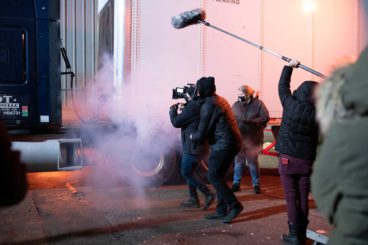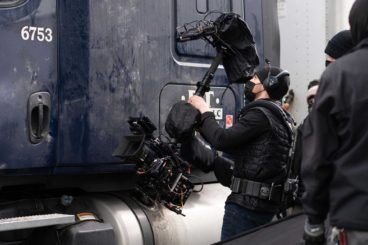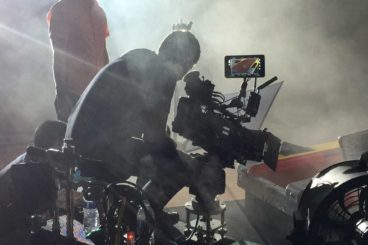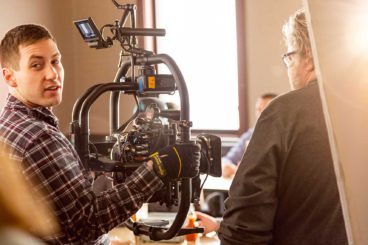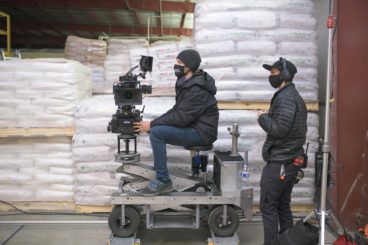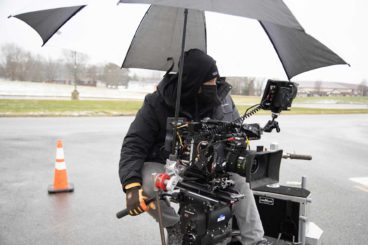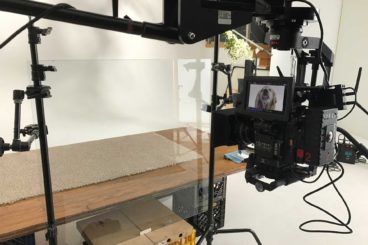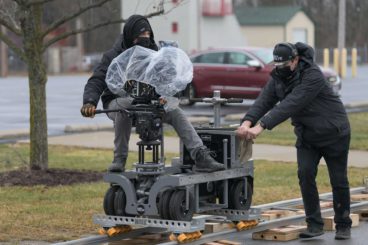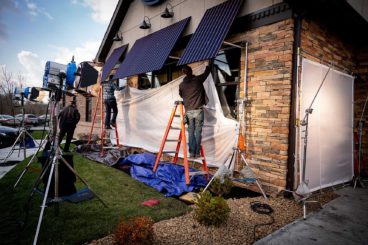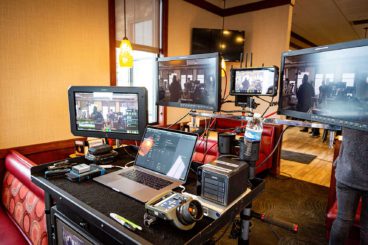
Hi, I’m Ryan Forte, and I’m a Steadicam Operator, Camera Operator, & Director of Photography Local to Chicago and New York . I believe outside of the technical skills, that collaboration is key and after a 12 hour day character shines through… I’m passionate about filmmaking and have the experience to back it up. I’ve worked on a wide range of productions such as narrative feature films to high end commercials, comedy specials, music videos, and much more; I bring my unique perspective to every project to help translate concepts and ideas into cinematic visuals. Filmmaking is a team sport and it is really amazing how each role can really add their own touch to the end product. It isn’t one person that makes a great film. It’s the collaboration of talent & crew that makes something “cinematic” and impactful to the audience.
I believe camera movement (or lack of) is a huge component of telling a visual story. By specializing as an operator with expertise in steadicam, gimbals, and camera cranes; I can offer a lot of shooting solutions when collaborating with Directors & other DoP’s. For example the use of dynamic opening shots, long one takes, music performances, live camera work & most importantly make our day.
Role of the Camera Operator
With a dedication to precision in camera movement, finding the right tool for the job is always the concern. When working out the logistics of a shot on set, communication is key. I pride myself on being a great communicator and feel that’s what makes me a great camera operator. Once you’re on set being able to give direction to the team around you is an important skill. Knowing the tools, the team, and the story makes the Camera Operator a vital member of the crew.
Block, Rehearse, Shoot is the process. Knowing how to help a director block a moving camera cam be challenging. I believe my time as a steadicam operator has opened up my mind to consider more possibilities for the project. Working with talent and giving direction to others can be a delicate process. You need to trust the people you are working with and I start working hard to earn that trust on day one.

Cinematographer & Steadicam Operator
Cinematography Fueled By Inspiration, Creativity & Purpose
Cinematography
As you begin pre-production on your TV shoot, film, or commercial video the cinematography is often the catalyst of inspiration. Movies, images or productions similar to your vision can influence the beginning of your concept.
The biggest difference between a cinematographer and videographer is conceptualization of the visuals with intention and purpose behind the choices as a visual artist. Actively making aesthetic choices pushing towards a desired end result that resonates with your intended audience. This part of the production process is the most exciting, freeing, and fulfilling part of being a cinematographer; as we begin to critically think about production goals and start to direct the photography of your shoot to get the desired end result. This active collaboration between a Director, Director of Photography, and Camera Operator is what makes creative and interesting shots possible.

Bring Refined Camera Work To Your Production!

Specializing in Camera Movement
Use of Steadicam, Camera Cranes, Gimbals, Handheld, Remote Heads, Dollies, Drones, and other forms of camera movement & stabilization is how we speak the visual language. Each shot developed, whether on set or with a story board, uses one of these tools to execute the proper framing throughout the length of the shot. A critical understanding of all these tools, the skills required to operate them, and the support of the rest of the crew on set that allows us to “Get the Shot.”
One of the most important parts of camera movement is understanding when not to move just as much as moving. The relationship between timing, blocking and framing can make shots feel cinematic….or just wrong. Even great ideas on paper don’t always work out the way they are planned. This balance and relationship is vital to the filmmaking process. It’s essential for all Directors of Photography, Cinematographers, and Camera Operators to understand this in order to effectively execute planned visual concepts on set.

Steadicam Operator
I am an owner and steadicam operator equipped with a XCS Ultimate 3 Sled with a Volt Gimbal. This setup is fast and efficient. I can handle any camera and lens combination at almost any camera height. The goal is to always to be ready and never let our creativity to be limited by our equipment.
Being a good steadicam operator is it is about collaboration, blocking, setting marks, rehearsing, and alsways striving to make each shot the very best it can be. It’s important who you choose to work with and I take that consideration to heart. I strive to be a leader, a creative, and most importantly another filmmaker to work with you to ensure you accomplish what you set out to do.

Director of Photography
As a Director of Photography, I focus on the script, collaborating with the director. In pre-production I pour every ounce of creativity into the concept and what it will take from a technical perspective to accomplish this on set. As the age old saying goes:
“You are only as good as your team”
I strive to surround myself with the right people for the production; include every specialist, artist and crew member in my departments that will bring creativity, efficiency, and work to a common goal and desired look right in line with the director’s vision.
Once on set working with the gaffer, camera operator, DIT, & the rest of my team, it becomes a chess game that every director of photography plays. Taking all the pre-production materials, combining them with the conversations with directors and producers, that gets funneled into an established style and theme adhered to for each and every decision made. The intention behind the image is just important as the execution of it. This is what separates cinematography and videography. My focus is simple, make great content that serves the story.
They say every film is made three times. Once when it is written, twice when is shot, and a third time when it is edited. While I leave the edit to the director & post-departments, I love being involved with the color grade. This finishing process can add another layer of visual storytelling that compliments the story and sets the tone for the piece. Two different color grades can render totally different results from the viewer. Knowing where you are going with the color grade in post should be accounted for in production as it will impact decisions like lens choices and lighting direction. From start to finish the Director of Photography’s role isn’t finished until the movie is released.
Every day in the film industry is your first and last day. I strive to put 100% of myself into every shot!
Three Axis Gimbal Operator – Movi Pro & Ronin 2
Three axis gimbals can be a poor replacement for many other tools on set. This can be a choice based on budget or just a general misunderstanding of its strengths and weaknesses. The Ronin 2 & Movi Pro offer the stabilization and control of a remote head with the freedom of a handheld camera. If used correctly it is invisible to the audience, but used incorrectly it can be distracting and feel robotic.
Drones, Segways, Cranes and Magnetic Quick Releases are all ways you can expand the possibilities of what you can accomplish with a Movi Pro or Ronin 3 axis gimbal stabilizer. If there is a shot that requires someone to attach a camera to a crane through a window or descend 300 feet out of the sky into a close up, then a 3 axis gimbal is definitely the tool for the job. It’s important to know the limitations and possibilities gimbals offer in order to use them effectively. As an owner operator I have spent years working with them professionally to fully grasp when to use them and when not to

